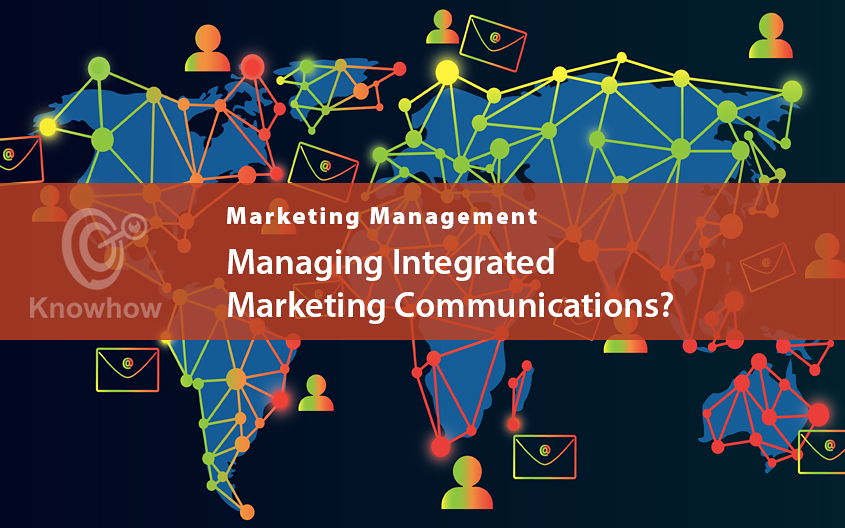
Effectively managing integrated marketing communications is all about improving the brand image and brand awareness which is not a simple task. For that reason, companies have to create marketing strategies and build campaigns around them. And one of the most important aspects of building brand awareness is communication. So companies have to create channels of communication in order to reach new customers and maintain contact with the existing ones. Furthermore, communication should include the stakeholders as well.
There are several ways to achieve communication with potential customers and clients. Those methods include advertising, public relation activities, direct marketing, sales promotions, and interactive marketing.
The Communication Process
Companies should remember that communication is not a one-way street. And they should actually look forward to developing proper channels of communication. After all, there are multiple benefits to allowing customers to communicate their desires. Thankfully, technology has given us multiple ways to maintain communication channels. Over the years, companies have used telephones and direct mail to allow customers to contact them. But those methods weren’t very effective. However, nowadays, the Internet is making it easier and faster than ever to reach a company.
There are nine individual elements of the communication process which are then separated into four distinct groups. The first group are the two parties, the sender (this is usually the company) and the receiver (the consumers). The second group includes the messages and the media as tools of communications. Going on, the third group includes the four functions of communication – encoding, decoding, response, and feedback. Finally, we have the noise that disrupts the clarity of the message. The elements that require further explanation are the functions of the message and the message itself.
Message
If the senders want to make the message effective, they should encode it in a way that suits their target audience. The audience then decodes the message and responds to it, sending feedback to the company. The goal of the sender is to get the best possible response by using the right message.
There are three common reasons why messages fail to be effective:
- They are not attention-grabbing
- Target audiences do not correlate to the message
- The effects of earlier messages are still influencing the audiences
Communication Programme Development
In order to develop an effective communication programme, companies have to put in a lot of effort. We can break down the development process into eight different steps:
1. Identifying the Target Audience
For the purposes of the majority of communication programmes, the target audience includes either potential new customers or the existing ones. And identifying the groups of people companies want to target is crucial for the success of the programme.
2. Setting the Objectives
Any message companies are relaying to the target audience should have a goal. In most cases, that goal is usually the improvement of the company’s image or a call to action.
3. The Message Design
Once companies figure out the goal of their message, they should focus on the design of the said message. There are four points the design should address: the content, the structure, the format, and the source of the message.
4. Communication Channel Selection
Not every communication channel is ideal for every target audience. Companies should choose appropriate channels in order to communicate with their customers. For example, if a company is targeting doctors, putting out billboards might not be the most effective way to go about it. But if the target audiences are broad, using billboards might be worth it.
5. Creating the Budget
The fifth step of the process includes estimating the cost of the undertaking. Promotions can cost a lot of money, and companies have to be ready for those expenses.
6. Balancing the Methods of Communication
Once a company settles down on the budget they have for a campaign, they have to fine-tune it. Namely, companies that aren’t ready to spend incredible amounts of money have to find a way to balance their spendings between sales promotion, ads, PR activities, direct marketing, and sales forces. And there is no single formula that works for all industries. So companies have to have a deep understanding of their consumer bases before they start assigning tasks.
7. Measuring the Results of the Communication Programme
Going back to the second step, we should remember that every communications programme has a goal. And since these programmes can be rather costly, it is of paramount importance to keep track of the success of the process. Companies should be able to see the increase in sales or the relation of the public towards the brand.
8. Integrating the Marketing Process
Companies can’t rest on a single plan. For that reason, they should integrate any available tools in order to improve communication with their customers.
Related content:
Marketing Management Knowhow – learn more about marketing with our collection of educational articles.
From corporate promotional pens, promotional coffee mugs, printed water bottles, and outdoor clothing through to notebooks and branded pencil cases, here at GoPromotional we believe that you are sure to find the perfect range of products to help successfully market your brand.
If however, you require further information or have any specific questions, don’t hesitate to give a member of our experienced team a call on 0800 0148 970 or simply email us today.






